 The NYer privilege of being able to see a zillion interesting shows onany given night has always made me jealous, but rarely so much as itdid when Painkiller was resurrected for a couple of nights with HamidDrake on drums earlier this year. Thankfully, the Japanese havereleased the next best thing on this pair of CDs: an hour and a half ofPainkiller's fatter, funkier brother, the terribly-named Buck JamTonic. The two discs make a neat set: the first was mixed by drummerTatsuya Nakamura, while the second features three Bill Laswellinterpretations of the same sessions. An obvious result is that there'ssome overlap of source material between the discs (see the samples of"Nu," from the Tokyo mix, and "Tzu," from the New York mix), but whereNakamura's tracks are rough-sounding little nuggets of rock, Laswell'sare denser epics that build and ebb dramatically (across a widerspectral range, too) over the course of 20 or 30 minutes. Furtheringthe variety, John Zorn actually played alto and soprano sax that day instead of just honking, and Laswell pulled out some monstrous "boWAAAAAAAOW" noises to really get the blood flowing; the effect is a lot like the ugly muscle of Execution Ground, only with way peppier drumming. Hearing it through two different sets of ears gives BJTsome replay value beyond its fist-pumping qualities, too, so it's morethan just a replacement for a concert experience. Get past the awfulname and hideous cover, and there's plenty to enjoy.
The NYer privilege of being able to see a zillion interesting shows onany given night has always made me jealous, but rarely so much as itdid when Painkiller was resurrected for a couple of nights with HamidDrake on drums earlier this year. Thankfully, the Japanese havereleased the next best thing on this pair of CDs: an hour and a half ofPainkiller's fatter, funkier brother, the terribly-named Buck JamTonic. The two discs make a neat set: the first was mixed by drummerTatsuya Nakamura, while the second features three Bill Laswellinterpretations of the same sessions. An obvious result is that there'ssome overlap of source material between the discs (see the samples of"Nu," from the Tokyo mix, and "Tzu," from the New York mix), but whereNakamura's tracks are rough-sounding little nuggets of rock, Laswell'sare denser epics that build and ebb dramatically (across a widerspectral range, too) over the course of 20 or 30 minutes. Furtheringthe variety, John Zorn actually played alto and soprano sax that day instead of just honking, and Laswell pulled out some monstrous "boWAAAAAAAOW" noises to really get the blood flowing; the effect is a lot like the ugly muscle of Execution Ground, only with way peppier drumming. Hearing it through two different sets of ears gives BJTsome replay value beyond its fist-pumping qualities, too, so it's morethan just a replacement for a concert experience. Get past the awfulname and hideous cover, and there's plenty to enjoy.samples:


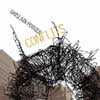 Intr_version continues its winning streak with the fourth release fromunclassifiable French-Canadian maverick Ghislain Poirier, showing himmoving more towards a pure hip-hop sound, while keeping a foot firmlyplaced in the minimal, beautifully melancholic electronica that filledearlier releases like his 12k debut. Conflicts,however, is more a product of contemporary politics than any logicalprogression for the artist himself. Of the twelve tracks, only threeinclude rapping, but the entire disc bears urgent witness to a seriesof protests, struggles, and reconstructions. Poirier's music has neverbeen texturally complex, working instead through the juxtaposition of afew bold layers to create absorbing, cinematic spaces, but where beforea calm, meditative mood was achieved, Conflicts is anxious andpensive. On almost every song, thick, unadorned breaks take theforeground, often lacking more than one or two accompanying layers.Poirier's sonic palette has taken a turn towards grittier, more tactilesounds, like groaning feedback and plodding double bass. The hollowresonance of a plucked bass-note could represent the whole of Conflicts,not thematically vacant, but a record that, on the contrary, suggeststhe bombed-out spaces of the industrial skeleton on its cover. Hooksand melodies emerge in fragmented form and feel barely afloat on thethin strains of stringed instruments and feedback whines that createthe rarely comforting backdrop of most tracks. The album's lyrics areoutwardly political, something obvious to even the non-French speaker,and Poirier's delivery is unique; half spit and half spoken, his wordsare as confrontational as they are musical. The most impressive partsof Conflicts, though, are the instrumentals covering the disc'ssecond half. Poirier has a thing for off-kilter beats that skip around,hitting and missing, but he uses them in a way that is never overkill,managing to keep focus on the physicality of the beat itself withoutslipping into self-parody. He also loves to send rhythms, and entiresongs, sliding arbitrarily into silence, only to bring them staggeringback out for a big finish, a habit made possible by the rich and oftenformless nature of his backgrounds. From a few layers of droningfeedback, Poirier is able to construct an elaborate cradle for therhythms that front each piece, creating music that sounds at times likethe high frequency squeal of Nurse with Wound's Soliloquy for Lilith,put to a skipping backbeat. If Steven Stapleton is really consideringhip-hop for his new direction as he claims to be, he might do worsethan check in on Poirier for some inspiration.
Intr_version continues its winning streak with the fourth release fromunclassifiable French-Canadian maverick Ghislain Poirier, showing himmoving more towards a pure hip-hop sound, while keeping a foot firmlyplaced in the minimal, beautifully melancholic electronica that filledearlier releases like his 12k debut. Conflicts,however, is more a product of contemporary politics than any logicalprogression for the artist himself. Of the twelve tracks, only threeinclude rapping, but the entire disc bears urgent witness to a seriesof protests, struggles, and reconstructions. Poirier's music has neverbeen texturally complex, working instead through the juxtaposition of afew bold layers to create absorbing, cinematic spaces, but where beforea calm, meditative mood was achieved, Conflicts is anxious andpensive. On almost every song, thick, unadorned breaks take theforeground, often lacking more than one or two accompanying layers.Poirier's sonic palette has taken a turn towards grittier, more tactilesounds, like groaning feedback and plodding double bass. The hollowresonance of a plucked bass-note could represent the whole of Conflicts,not thematically vacant, but a record that, on the contrary, suggeststhe bombed-out spaces of the industrial skeleton on its cover. Hooksand melodies emerge in fragmented form and feel barely afloat on thethin strains of stringed instruments and feedback whines that createthe rarely comforting backdrop of most tracks. The album's lyrics areoutwardly political, something obvious to even the non-French speaker,and Poirier's delivery is unique; half spit and half spoken, his wordsare as confrontational as they are musical. The most impressive partsof Conflicts, though, are the instrumentals covering the disc'ssecond half. Poirier has a thing for off-kilter beats that skip around,hitting and missing, but he uses them in a way that is never overkill,managing to keep focus on the physicality of the beat itself withoutslipping into self-parody. He also loves to send rhythms, and entiresongs, sliding arbitrarily into silence, only to bring them staggeringback out for a big finish, a habit made possible by the rich and oftenformless nature of his backgrounds. From a few layers of droningfeedback, Poirier is able to construct an elaborate cradle for therhythms that front each piece, creating music that sounds at times likethe high frequency squeal of Nurse with Wound's Soliloquy for Lilith,put to a skipping backbeat. If Steven Stapleton is really consideringhip-hop for his new direction as he claims to be, he might do worsethan check in on Poirier for some inspiration.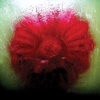 I sometimes like music that floats effortlessly from drone to post-rockknob twiddling to electronic beats of fancy, all over the same album,and still makes it seem normal, like it isn't driven by some mentalillness or other after all. Twelve's First Albumis exactly that kind of record, custom designed to infect the brain andnever let go, and for the most part it accomplishes this noble, perhapsimpossible, goal. In quite possibly the trippiest framework since theself-titled For Carnation album of three years ago, Twelve moveeffortlessly from genre to genre without so much as a breath of freshair. Six.By Seven's Chris Olley is the brainchild of the proceedings,bringing along vocalist Tee Dymond and Six.By's drummer Chris Davis tofill it all out. The album starts with a twenty-four guitar drone trackof stunning but simplistic beauty before settling in to the slow coreepic "Talkin About." Clocking in at over eleven minutes — though itdoesn't ever feel like it — the track starts off quiet enough buteventually soars in two glorious crescendos of guitars and programmedstrings. A lovely, earnest beginning; then, it all just goes awry, butnot in a bad way. "Travelin' Light" is funk bass electronic madnesswith a bit of drone mixed in that sets the album on its ear, and thepolyrhythmic wonder of it all takes over half the record. The slow rockreturns on "Never Let You Go" and "Now," but this record belongs to thegrind and grit of the programmed tracks. It's a complete record,there's nothing missing, and a combination of the styles might havemade it all implode. Flawed though this may seem, it serves the recordperfectly for a solid debut that previous work merely hinted at if atall.
I sometimes like music that floats effortlessly from drone to post-rockknob twiddling to electronic beats of fancy, all over the same album,and still makes it seem normal, like it isn't driven by some mentalillness or other after all. Twelve's First Albumis exactly that kind of record, custom designed to infect the brain andnever let go, and for the most part it accomplishes this noble, perhapsimpossible, goal. In quite possibly the trippiest framework since theself-titled For Carnation album of three years ago, Twelve moveeffortlessly from genre to genre without so much as a breath of freshair. Six.By Seven's Chris Olley is the brainchild of the proceedings,bringing along vocalist Tee Dymond and Six.By's drummer Chris Davis tofill it all out. The album starts with a twenty-four guitar drone trackof stunning but simplistic beauty before settling in to the slow coreepic "Talkin About." Clocking in at over eleven minutes — though itdoesn't ever feel like it — the track starts off quiet enough buteventually soars in two glorious crescendos of guitars and programmedstrings. A lovely, earnest beginning; then, it all just goes awry, butnot in a bad way. "Travelin' Light" is funk bass electronic madnesswith a bit of drone mixed in that sets the album on its ear, and thepolyrhythmic wonder of it all takes over half the record. The slow rockreturns on "Never Let You Go" and "Now," but this record belongs to thegrind and grit of the programmed tracks. It's a complete record,there's nothing missing, and a combination of the styles might havemade it all implode. Flawed though this may seem, it serves the recordperfectly for a solid debut that previous work merely hinted at if atall.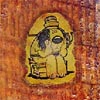 With a name dually inspired by Francois Truffaut's The 400 Blows and a sudden, tragic drop in seratonin levels, 400 Lonely Things is clouded in a nebulous haze of sadness, brought on by doubt, aggravated by melancholy. The beautifully packaged limited edition LP of the debut album offers no information on the instrumentation or personnel involved in its creation. The idea, I suppose, is to isolate the listener in the same way the artist imagines himself isolated.
With a name dually inspired by Francois Truffaut's The 400 Blows and a sudden, tragic drop in seratonin levels, 400 Lonely Things is clouded in a nebulous haze of sadness, brought on by doubt, aggravated by melancholy. The beautifully packaged limited edition LP of the debut album offers no information on the instrumentation or personnel involved in its creation. The idea, I suppose, is to isolate the listener in the same way the artist imagines himself isolated.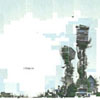 All the light-weight electronics and smeared melody runs make me thinkof the ocean pushing up against the beach this past year. All thesounds suggest a simple tinkering, something happening just under asheet of roaring noise that somehow stops roaring and goes into acocoon to emerge as a whisper. Children are running all over the place,too, and it's not that they're making a mess, but I'll be damned ifthey don't seem way more busy than they should be capable of.Everything's a little simplified on Pinaforeand that being so, I have a difficult time feeling anything butnostalgic when this is spinning. The sounds are piled one on anotherand it's very easy to capture every little second of music in my headand let it push its full effect on me. The record, I'm afraid to say,almost made me just a little sad. I couldn't help but think of theCalifornia beach and the way the water sounds when its crashing intorocks and the way, despite that incredible wall of sound, that thebirds, the wind, and the people's voices around me were crystal clear.I make it sound as if Illoin writes noise-inspired music, buteverything is very subtle: all the drums click and clack and sort ofstutter underneath pillows while bass melodies swindle their way out ofa little kid's toys. It makes me want to dance a little bit, but thatmelancholy is a strong presence. The lonly piano of "Pinafore" and theringing and delicate raindrops on "Darkwater" drag me under and intomemory and its a strong presence to be in the company of when musicmakes it so visceral. I was watching it snow outside while I listenedto this record, too, and it was a soft snow-fall. The music almostseemed to mimic the way the snow fell and was whipped about by thewind. This is a stark and simultaneously lush collection of songs thathas stayed in my player since I received it.
All the light-weight electronics and smeared melody runs make me thinkof the ocean pushing up against the beach this past year. All thesounds suggest a simple tinkering, something happening just under asheet of roaring noise that somehow stops roaring and goes into acocoon to emerge as a whisper. Children are running all over the place,too, and it's not that they're making a mess, but I'll be damned ifthey don't seem way more busy than they should be capable of.Everything's a little simplified on Pinaforeand that being so, I have a difficult time feeling anything butnostalgic when this is spinning. The sounds are piled one on anotherand it's very easy to capture every little second of music in my headand let it push its full effect on me. The record, I'm afraid to say,almost made me just a little sad. I couldn't help but think of theCalifornia beach and the way the water sounds when its crashing intorocks and the way, despite that incredible wall of sound, that thebirds, the wind, and the people's voices around me were crystal clear.I make it sound as if Illoin writes noise-inspired music, buteverything is very subtle: all the drums click and clack and sort ofstutter underneath pillows while bass melodies swindle their way out ofa little kid's toys. It makes me want to dance a little bit, but thatmelancholy is a strong presence. The lonly piano of "Pinafore" and theringing and delicate raindrops on "Darkwater" drag me under and intomemory and its a strong presence to be in the company of when musicmakes it so visceral. I was watching it snow outside while I listenedto this record, too, and it was a soft snow-fall. The music almostseemed to mimic the way the snow fell and was whipped about by thewind. This is a stark and simultaneously lush collection of songs thathas stayed in my player since I received it. The first release by the Chinese Stars is a no frills romp with moxy tospare, a post-punk garage tirade that refuses to relent, and a tooshort visit from a friend you miss only after he's been gone longenough to forget what you didn't like. At fourteen-and-a-half minutesand five tracks, it's just a taste, and some may see that as a goodthing. This is music for the mentally ill, made by the mentally ill,and every sloppy minute of it is another godsend. Former members of SixFinger Satellite and Arab on Radar make up the Stars, and their CD cutinto the shape of one of the implements with which they share theirname. Lyrics like "You could build a bone toilet with the calories thatroll off your shoulder" and "I was grew up in a glue factory/my teenageyears were less than satisfactory" pepper the release, yet Eric Paulsings "Now, I worry about you" as if everyone else has a problem buthe's fine. The ugly crunch of the guitar and the pounding drums — withcowbell that would make Christopher Walken proud in areas — do nothingbut feed this perversion, but at the end it's all in good fun. I couldnot resist tapping my foot, and though abrasive it may be as theguitars squeal to bleed the eardrums, this EP is jolly fun to listen toand rolls right along like it would run anything over if it got intheir way. It's a fantastic primer for what the band is capable of, andit serves as a warning in a way: these Chinese Stars are dangerous, andnot to be trifled with.
The first release by the Chinese Stars is a no frills romp with moxy tospare, a post-punk garage tirade that refuses to relent, and a tooshort visit from a friend you miss only after he's been gone longenough to forget what you didn't like. At fourteen-and-a-half minutesand five tracks, it's just a taste, and some may see that as a goodthing. This is music for the mentally ill, made by the mentally ill,and every sloppy minute of it is another godsend. Former members of SixFinger Satellite and Arab on Radar make up the Stars, and their CD cutinto the shape of one of the implements with which they share theirname. Lyrics like "You could build a bone toilet with the calories thatroll off your shoulder" and "I was grew up in a glue factory/my teenageyears were less than satisfactory" pepper the release, yet Eric Paulsings "Now, I worry about you" as if everyone else has a problem buthe's fine. The ugly crunch of the guitar and the pounding drums — withcowbell that would make Christopher Walken proud in areas — do nothingbut feed this perversion, but at the end it's all in good fun. I couldnot resist tapping my foot, and though abrasive it may be as theguitars squeal to bleed the eardrums, this EP is jolly fun to listen toand rolls right along like it would run anything over if it got intheir way. It's a fantastic primer for what the band is capable of, andit serves as a warning in a way: these Chinese Stars are dangerous, andnot to be trifled with.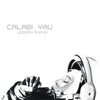 It seems like an eternity since the release of Suchy's third album, Entskidoo,easily one of my favorites from last year. The record felt like thefirst major statement from the German guitarist-turned-laptopper,beautifully representing his skills over two seamless sides, eachteeming with layers of pixilated guitar noise that coalesce to createsomething wholly other. Suchy makes psychedelia for the digital age, aremarkably streamlined combination of hypnotic, half-improvised guitarlines and an equally absorbing array of electronic sounds. His guitartalent is matched only by his ability to integrate it with the rest ofhis often busy, though never confused compositions. The sound ofSuchy?s guitar becomes automated rattle, static drone, windchime, eventhe wind itself, until enjoying it means slipping into a kind of trancestate, swaying at Suchy's whim. Calabi.Yau is less noisy andless colorful than its predecessor but is equally rich in both sonicdensity and hallucinatory power. Suchy keeps plenty of melody at hand,though here it is pushed further from the core of the songs, which relymore on shivering feedback and scattered plucking and tinkering toachieve their desired effects. When melody does enter, it comes with anaura of detachment, a hesitance to make too bold a stroke. Where Entskidoo was like a journey through the tropics or some mutant jungle, Calabiis colder and more spacious. Even "Ka-asam," the disc's most raucouslypsychedelic track, arrives through a background of weightless drones,floating in on choppy waveforms like transmissions of a distantsatellite. The new addition of Stephen Barnickel's percussioncontributes ominous gong-like roars to Suchy's frequently gorgeouspicked sections, and various clatter to the more abstract parts, addingtangible, or at least recognizable touches to the guitarist'sincreasingly bizarre soundscapes. I've always thought it a mystery whySuchy is so rarely grouped among other electronic or experimentalartists using guitars, like Fennesz or Christopher Willits. Though witheach new release, Suchy gives me the easy answer: he operates on acompletely elevated plain. The production value and nuance of thisrecord places it on par with any from the aforementioned musicians, butthe complexity of Suchy's arrangements, the emotional and illusionistdistance covered by each track, remains unmatched.
It seems like an eternity since the release of Suchy's third album, Entskidoo,easily one of my favorites from last year. The record felt like thefirst major statement from the German guitarist-turned-laptopper,beautifully representing his skills over two seamless sides, eachteeming with layers of pixilated guitar noise that coalesce to createsomething wholly other. Suchy makes psychedelia for the digital age, aremarkably streamlined combination of hypnotic, half-improvised guitarlines and an equally absorbing array of electronic sounds. His guitartalent is matched only by his ability to integrate it with the rest ofhis often busy, though never confused compositions. The sound ofSuchy?s guitar becomes automated rattle, static drone, windchime, eventhe wind itself, until enjoying it means slipping into a kind of trancestate, swaying at Suchy's whim. Calabi.Yau is less noisy andless colorful than its predecessor but is equally rich in both sonicdensity and hallucinatory power. Suchy keeps plenty of melody at hand,though here it is pushed further from the core of the songs, which relymore on shivering feedback and scattered plucking and tinkering toachieve their desired effects. When melody does enter, it comes with anaura of detachment, a hesitance to make too bold a stroke. Where Entskidoo was like a journey through the tropics or some mutant jungle, Calabiis colder and more spacious. Even "Ka-asam," the disc's most raucouslypsychedelic track, arrives through a background of weightless drones,floating in on choppy waveforms like transmissions of a distantsatellite. The new addition of Stephen Barnickel's percussioncontributes ominous gong-like roars to Suchy's frequently gorgeouspicked sections, and various clatter to the more abstract parts, addingtangible, or at least recognizable touches to the guitarist'sincreasingly bizarre soundscapes. I've always thought it a mystery whySuchy is so rarely grouped among other electronic or experimentalartists using guitars, like Fennesz or Christopher Willits. Though witheach new release, Suchy gives me the easy answer: he operates on acompletely elevated plain. The production value and nuance of thisrecord places it on par with any from the aforementioned musicians, butthe complexity of Suchy's arrangements, the emotional and illusionistdistance covered by each track, remains unmatched. Continuing the time-honored tradition of reissuing widely availableback albums instead of releasing new music, Current 93 present aremastered, repackaged and expanded 2CD re-release of 1991's Thunder Perfect Mind. In contrast to some recent, mostly pointless rehashes of the back catalog, TPMwas due for this treatment, as the original CD issue was poorlymastered. The volume was far too low and the mix lacked punch, inferiorto the hard-to-find LP edition. The bonus disc is comprised of TPM-era outtakes, alternate versions and live material. Nearly all of this material can also be found on Emblems: The Menstrual Years and Calling For Vanished Faces,so Current 93 collectors will find very little that is attractive aboutthis package, with the exception of the restored LP cover artwork andthe nifty foldout digipack. Of course, the music on Thunder Perfect Mind is nothing less than essential, the first entry in David Tibet's masterful three-album run that also included the classics Of Ruine or Some Blazing Starre and All The Pretty Little Horses. With TPM,David Tibet created his first highly personal tour de force, asprawling double album that finally gelled all of Tibet's myriadinfluences - esoteric, lyrical and musical - and represented the veryculmination of his promising, though uneven early career. Thunder Perfect Mindis that rare class of albums where every track is a highlight - thecrisp medieval balladry and bizarre Gnostic cosmology that comprise"The Descent of Long Satan and Babylon," the melancholic funeral dirgeof "A Song for Douglas After He's Dead," the atmospheric gloom of "ASadness Song" and the swirling, spectral psychedelia of "All The StarsAre Dead Now." The collaborations on TPM are among Current 93'sfinest: Jhon Balance's vocals on "Rosy Star Tears From Heaven" pushesthe track into the kind of Satanic fury previously only heard on Comus'First Utterance, and Bevis Frond's Nick Salomon contributes anelectrifying third-eye guitar track to the side-long prophetic Blakeanhallucinations of "Hitler as Kalki (SDM)." David Tibet and producerSteven Stapleton transform holophonic krautrocker Sand's skeletal "WhenThe May Rain Comes" into a masterpiece of phased Euro-folk, evoking thewet cobblestones of a half-remembered old-world Berlin. A true rarityin the Current 93 canon, the outtakes from TPM are every bit asgood as the album, especially "Maldoror Is Ded Ded Ded Ded" and "TheyReturn To Their Earth" - a pair of stunning tracks that build to afrighteningly cathartic climax. The re-mastering job is admirable,raising the volume and adding dimension to the high and lowfrequencies, without sacrificing the integrity of the original'sfidelity. This is exactly what I hope for when a favorite of mine isre-issued - a superbly realized package that deepens, rather thandilutes my conviction that the album is a classic.
Continuing the time-honored tradition of reissuing widely availableback albums instead of releasing new music, Current 93 present aremastered, repackaged and expanded 2CD re-release of 1991's Thunder Perfect Mind. In contrast to some recent, mostly pointless rehashes of the back catalog, TPMwas due for this treatment, as the original CD issue was poorlymastered. The volume was far too low and the mix lacked punch, inferiorto the hard-to-find LP edition. The bonus disc is comprised of TPM-era outtakes, alternate versions and live material. Nearly all of this material can also be found on Emblems: The Menstrual Years and Calling For Vanished Faces,so Current 93 collectors will find very little that is attractive aboutthis package, with the exception of the restored LP cover artwork andthe nifty foldout digipack. Of course, the music on Thunder Perfect Mind is nothing less than essential, the first entry in David Tibet's masterful three-album run that also included the classics Of Ruine or Some Blazing Starre and All The Pretty Little Horses. With TPM,David Tibet created his first highly personal tour de force, asprawling double album that finally gelled all of Tibet's myriadinfluences - esoteric, lyrical and musical - and represented the veryculmination of his promising, though uneven early career. Thunder Perfect Mindis that rare class of albums where every track is a highlight - thecrisp medieval balladry and bizarre Gnostic cosmology that comprise"The Descent of Long Satan and Babylon," the melancholic funeral dirgeof "A Song for Douglas After He's Dead," the atmospheric gloom of "ASadness Song" and the swirling, spectral psychedelia of "All The StarsAre Dead Now." The collaborations on TPM are among Current 93'sfinest: Jhon Balance's vocals on "Rosy Star Tears From Heaven" pushesthe track into the kind of Satanic fury previously only heard on Comus'First Utterance, and Bevis Frond's Nick Salomon contributes anelectrifying third-eye guitar track to the side-long prophetic Blakeanhallucinations of "Hitler as Kalki (SDM)." David Tibet and producerSteven Stapleton transform holophonic krautrocker Sand's skeletal "WhenThe May Rain Comes" into a masterpiece of phased Euro-folk, evoking thewet cobblestones of a half-remembered old-world Berlin. A true rarityin the Current 93 canon, the outtakes from TPM are every bit asgood as the album, especially "Maldoror Is Ded Ded Ded Ded" and "TheyReturn To Their Earth" - a pair of stunning tracks that build to afrighteningly cathartic climax. The re-mastering job is admirable,raising the volume and adding dimension to the high and lowfrequencies, without sacrificing the integrity of the original'sfidelity. This is exactly what I hope for when a favorite of mine isre-issued - a superbly realized package that deepens, rather thandilutes my conviction that the album is a classic. 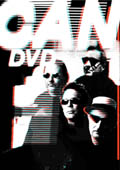 I've been listening to Can records for years without any kind of visual
counterpart other than the one created in my fertile imagination. Other
than the few photographs on the inner sleeve of the Tago Mago
LP, I had no idea what the band really looked like, or what their stage
presence would be, what kind of clothes they wore, or how they behaved
in interviews. In part, it was this total lack of a visual context that
made their music all the more mysterious and addictive to me. I
imagined a group of hairy future primitives; shamanic heads full of
acid and tightly wound sagacity, like Gandalf crossed with The Beatles
crossed with those aliens from Fantastic Planet.
I've been listening to Can records for years without any kind of visual
counterpart other than the one created in my fertile imagination. Other
than the few photographs on the inner sleeve of the Tago Mago
LP, I had no idea what the band really looked like, or what their stage
presence would be, what kind of clothes they wore, or how they behaved
in interviews. In part, it was this total lack of a visual context that
made their music all the more mysterious and addictive to me. I
imagined a group of hairy future primitives; shamanic heads full of
acid and tightly wound sagacity, like Gandalf crossed with The Beatles
crossed with those aliens from Fantastic Planet. Montreal-based future million-sellers Stars have the right formulaworking for them. The instrumental competance is flawless, theproduction is fantastic, and the sincerity is genuine, but I can't getover my polar gut feelings about the dichotomy of the two singers.Songs like "Elevator Love Letter," and "Look Up," with Amy Millantaking the lead vocal, are both ear-grabbingly pop-powerful andwistfully surreal to hold the attention, as well as her parts on songslike "Heart." These tunes alone make a strong, compelling case in favorof this record. However, most of the material in between, sung byTorquil Campbell are a bit too timid for my tastes. In almost allcases, the group executes a fine balance between guitars, violin, andboth electronic and organic percussion. The songs are undeniablyprepped for greatness, which doesn't render them completely wishy-washyor forgettable, but I'm only left with a feeling of mediocrity withclich? love songs that aren't challenging enough to make me keep comingback. Rest assured, however, that the true standout songs from here arepowerful enough to be forever immortalized to a small number of peoplein the form of handwritten mix tapes that come directly from the heart.
Montreal-based future million-sellers Stars have the right formulaworking for them. The instrumental competance is flawless, theproduction is fantastic, and the sincerity is genuine, but I can't getover my polar gut feelings about the dichotomy of the two singers.Songs like "Elevator Love Letter," and "Look Up," with Amy Millantaking the lead vocal, are both ear-grabbingly pop-powerful andwistfully surreal to hold the attention, as well as her parts on songslike "Heart." These tunes alone make a strong, compelling case in favorof this record. However, most of the material in between, sung byTorquil Campbell are a bit too timid for my tastes. In almost allcases, the group executes a fine balance between guitars, violin, andboth electronic and organic percussion. The songs are undeniablyprepped for greatness, which doesn't render them completely wishy-washyor forgettable, but I'm only left with a feeling of mediocrity withclich? love songs that aren't challenging enough to make me keep comingback. Rest assured, however, that the true standout songs from here arepowerful enough to be forever immortalized to a small number of peoplein the form of handwritten mix tapes that come directly from the heart.
